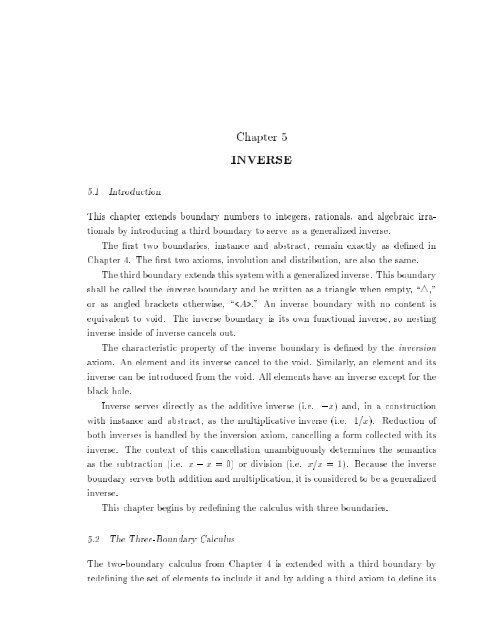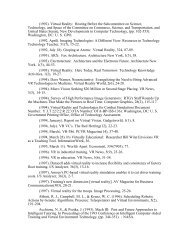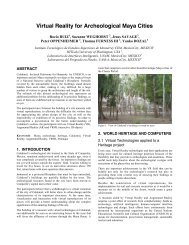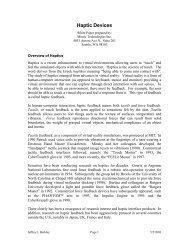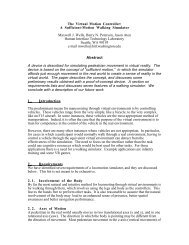A Calculus of Number Based on Spatial Forms - University of ...
A Calculus of Number Based on Spatial Forms - University of ...
A Calculus of Number Based on Spatial Forms - University of ...
Create successful ePaper yourself
Turn your PDF publications into a flip-book with our unique Google optimized e-Paper software.
Chapter 5<br />
INVERSE<br />
5.1 Introducti<strong>on</strong><br />
This chapter extends boundary numbers to integers, rati<strong>on</strong>als, and algebraic irrati<strong>on</strong>als<br />
by introducing a third boundary to serve as a generalized inverse.<br />
The rst two boundaries, instance and abstract, remain exactly as dened in<br />
Chapter 4. The rst two axioms, involuti<strong>on</strong> and distributi<strong>on</strong>, are also the same.<br />
The third boundary extends this system with a generalized inverse. This boundary<br />
shall be called the inverse boundary and be written as a triangle when empty, \4,"<br />
or as angled brackets otherwise, \:" Aninverse boundary with no c<strong>on</strong>tent is<br />
equivalent tovoid. The inverse boundary is its own functi<strong>on</strong>al inverse, so nesting<br />
inverse inside <str<strong>on</strong>g>of</str<strong>on</strong>g> inverse cancels out.<br />
The characteristic property <str<strong>on</strong>g>of</str<strong>on</strong>g> the inverse boundary is dened by the inversi<strong>on</strong><br />
axiom. An element and its inverse cancel to the void. Similarly, an element and its<br />
inverse can be introduced from the void. All elements have aninverse except for the<br />
black hole.<br />
Inverse serves directly as the additive inverse (i.e. ,x) and, in a c<strong>on</strong>structi<strong>on</strong><br />
with instance and abstract, as the multiplicative inverse (i.e. 1=x). Reducti<strong>on</strong> <str<strong>on</strong>g>of</str<strong>on</strong>g><br />
both inverses is handled by the inversi<strong>on</strong> axiom, cancelling a form collected with its<br />
inverse. The c<strong>on</strong>text <str<strong>on</strong>g>of</str<strong>on</strong>g> this cancellati<strong>on</strong> unambiguously determines the semantics<br />
as the subtracti<strong>on</strong> (i.e. x , x = 0) or divisi<strong>on</strong> (i.e. x=x = 1). Because the inverse<br />
boundary serves both additi<strong>on</strong> and multiplicati<strong>on</strong>, it is c<strong>on</strong>sidered to be a generalized<br />
inverse.<br />
This chapter begins by redening the calculus with three boundaries.<br />
5.2 The Three-Boundary <str<strong>on</strong>g>Calculus</str<strong>on</strong>g><br />
The two-boundary calculus from Chapter 4 is extended with a third boundary by<br />
redening the set <str<strong>on</strong>g>of</str<strong>on</strong>g> elements to include it and by adding a third axiom to dene its


